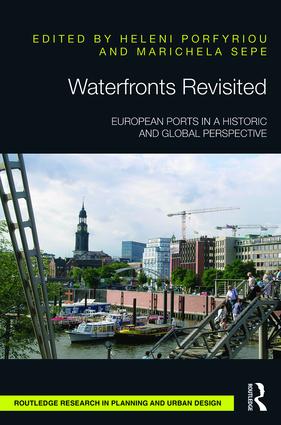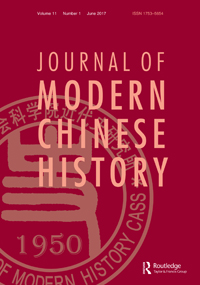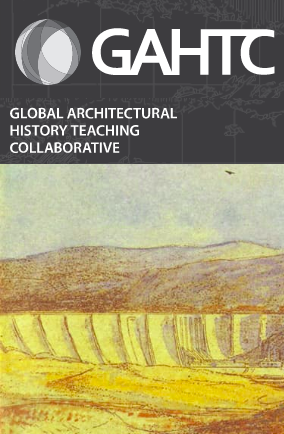This is the fourth of an ongoing series of profiles of GUHP members' work, highlighting the sheer breadth of scholarship in the field of global urban history.
Please consider ordering these titles for your personal and university libraries.
The series also salutes the work of networks and associations whose missions
overlap that of GUHP in significant ways.
Membership in GUHP is free of charge. To join visit our Homepage
|
|
|
Brand New Homeland: Zionism as Housing Regime, 1860-2011
by Yael Allweil, Architecture, Technion IIT (Israel)
(Routledge, 2017)
On 29 March 2016 the New York based online journal, Realty Today reported ‘Israel is facing a housing crisis with …[the] home inventory lacking 100,000 apartments… House prices, which have more than doubled in less than a decade, resulted in a mass protest back in 2011’. As Yael Allweil reveals in her fascinating book, housing has played a pivotal role in the history of nationalism and nation building in Israel-Palestine. She adopts the concept of ‘homeland’ to highlight how land and housing are central to both Zionism and Palestinian nationalism, and how the history of Zionist and Palestinian national housing have been inseparably intertwined from the introduction of the Ottoman Land Code in 1858 to the present day. [more]
GUHP Profile, Author website
|
| |
|
|
|
|
Brand New Brahmin Capitalism:
Frontiers of Wealth and Populism in America’s First Gilded Age
by Noam Maggor, History, Cornell
(Harvard University Press, 2017)
Brahmin Capitalism explores the transformation of Boston, previously the urban hub of a textile manufacturing region, into a major North American financial center in the late nineteenth century. It examines how a vanguard of gentlemen bankers mobilized to remake the city’s financial district into a base of operations for business ventures far and wide, particularly in the American West, and how their efforts collided with a competing vision of metropolitan development that was championed by a broad coalition of urban leaders. The book identifies city politics, not simply as derivative of an immutable process of global urbanization, but rather as a key arena where the institutional underpinnings of worldwide economic integration were contested and forged. [more]
GUHP profile, GUH blog post, Author website
|
| |
|
|
|
 |
|
|
|
|
Brand New Waterfronts Revisited: European ports in a historic and global perspective
Edited by Heleni Porfyriou, Heritage Conservation,
and Marichela Sepe, National Research Council (Italy)
(Routledge, 2017)
Waterfronts Revisited addresses the historical evolution of the relationship between port and city and re-examines waterfront development by looking at the urban territory and historical city in their complexity and entirety. By identifying guiding values, urban patterns and typologies, and local needs and experiences, cities can break the isolation of the harbor by reconnecting it to the urban structure; its functions, spaces and forms. Using the UNESCO recommendation for the "Historic Urban Landscape" as the guiding concept and a tool for managing urban preservation and change, this collection of essays illustrates solutions to issues of globalisation, commercialization of space and commoditisation of culture in waterfront development. [more]
GUHP profile: Pofyriou, Editor website: Porfyriou, Sepe
|
|
|
|
|
 |
|
| |
| |
|
"In Search of Frameworks for Productive Comparison of Cities in World History,"
Journal of Modern Chinese History
by Kristin Stapleton, History, SUNY Buffalo
Vol. 10, no. 2 September 2016, 230-247
In 2013, The Oxford Handbook of Cities in World History, edited by Peter Clark, was published. Its 44 chapters (a total of 882 pages) aim to develop a framework for understanding urban history comparatively and over long spans of time. The authors of the four chronological chapters on Chinese cities attempt to achieve the following goals: to examine the diversity of Chinese cities over time, to analyze the characteristics of Chinese urban development in general, and to illuminate how changing Chinese cities and urban networks reflect and influence world trends. This essay discusses how the Oxford Handbook can serve as a guide and resource for meaningful urban comparisons and also highlights some of its limitations. It compares the Oxford Handbook to a similar volume, The Routledge Handbook on Cities of the Global South, published in 2014. The essay encourages scholars of Chinese cities to consider widening the scope of their comparisons and contribute to scholarship on the development of urban systems worldwide. [more]
GUHP Profile, Author website
|
|
|
|
|
 |
|
|
|
|
Global Architectural History
Teaching Collaborative (GAHTC)
GAHTC had its origins in informal conversations between Mark Jarzombek and Vikramaditya Prakash, while they were at work on the second edition of A Global History of Architecture (Ching, Jarzombek, Prakash; Wiley 2006, 2010). The purpose of that textbook, which was organized by time-cuts rather than, for example, nation-states or regions or styles, was to offer a framework for instructors in breaking free of the Eurocentric canonical categories that structure the current historiographical narrative. After the publication of the first edition, it became clear that the problem was not just which material to include, but also the deep-seated uncertainty of teachers in presenting this material. This was a problem particularly for junior faculty who are just starting their teaching careers, most of whom had limited exposure to the larger world of history outside of their Ph.D. preparation. And yet, these people were often tasked with preparing and presenting material that, however interesting, appeared strange and daunting to them, since it lay outside the zone of familiar 'research'. [more]
|
|
|
|
To read back-issues of “Noteworthy in Global Urban History,” please click here.
|
| |